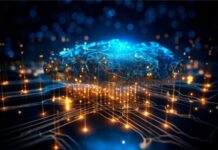In this era, we are producing a large amount of data. This data originates from sources such, as media organizational applications and systems, sensors, and customer transactions. Although this data holds value it can sometimes be overwhelming to analyse. This is where predictive analytics powered by AI and machine learning models step in. These powerful tools assist us in discovering patterns and uncovering insights within datasets that would otherwise remain hidden, from our grasp.
We must comprehend the following to properly understand this subject:
Let’s start with Predictive analytics. It is the process of using historical data to predict future outcomes. It is a powerful tool that can be used in a variety of industries, including healthcare, finance, and retail.
What is Machine learning?
It is a type of artificial intelligence (AI) that allows computers to learn without being explicitly programmed. Machine learning algorithms can be trained on historical data to identify patterns and make predictions.
Let’s now take a closer look at how machine learning and predictive analytics are enabled by AI functions.
Predictive analytics and machine learning models powered by AI find patterns and relationships in massive datasets. The models can be used to forecast future events once these patterns have been discovered.
For instance, a company could employ predictive analytics driven by AI to identify the consumers who are most likely to leave (cancel their business). To keep these consumers, the company might utilize this information to send these clients personalised offers or discounts.
Numerous techniques exist for massive datasets to be mined for patterns and insights using AI-powered predictive analytics and machine learning models. Machine learning and predictive analytics powered by AI can detect hidden patterns in massive datasets that would be hard or impossible to find manually. For instance, a machine learning model could be employed to find trends in consumer behaviour that might point to the possibility of churn.
AI-powered predictive analytics and machine learning models can identify complex relationships between different variables in a dataset. For example, a machine learning model could be used to identify the relationship between customer demographics, purchase history, and product reviews to predict which customers are most likely to purchase a new product. It can be used to make predictions about future events based on patterns identified in historical data.
There are many applications for machine learning and predictive analytics enabled by AI today. Here are a few illustrations:
Healthcare: Predictive analytics and machine learning models driven by AI are being used to create novel medications and treatments, identify illness risk factors, and enhance patient care.
Finance: To identify fraud, evaluate risk, and make investment decisions, predictive analytics and machine learning models powered by AI are being deployed.
Retail: To estimate customer demand, improve inventory levels, and customize marketing efforts, AI-powered predictive analytics and machine learning models are being deployed.
Manufacturing: To predict equipment breakdown, optimize production schedules, and enhance quality control, AI-powered predictive analytics and machine learning models are being employed.
Using machine learning and predictive analytics powered by AI has a lot of advantages, such as:
AI-powered predictive analytics and machine learning models can help businesses make better decisions by providing them with access to data insights they otherwise wouldn’t have. By automating routine tasks, predictive analytics and machine learning models driven by AI can free up workers to focus on more strategic projects.
Predictive analytics and machine learning models driven by AI can assist businesses in cutting expenses by pointing out places where they can increase productivity or cut waste. Predictive analytics and machine learning models driven by AI can assist firms in finding new opportunities that they would not otherwise be able to perceive.
Although there are benefits to utilizing AI driven predictive analytics and machine learning it is important to acknowledge the challenges and ethical concerns associated with them. One major concern relates to data privacy especially when dealing with volumes of data. Ethical handling of data and ensuring its protection against access are of importance. Another issue that arises is biased data, which can lead to predictions. If previous data reflects existing biases, machine learning models may inadvertently reinforce discriminatory conclusions. To address this problem thorough model evaluation and pre-processing of the data are necessary. The lack of transparency in machine learning models poses another challenge. Often referred to as ” boxes “ these models can be difficult to understand in terms of how they make decisions. Ongoing research focuses on enhancing model transparency and interpretability.
Furthermore, as machine learning and AI become increasingly integrated into sectors, they also become targets for cyberattacks. Ensuring the security of AI systems is paramount. In conclusion, while there are undoubtedly advantages to utilizing AI-powered analytics and machine learning it is crucial to remain aware of the difficulties and ethical considerations associated with them.
Predictive analytics and machine learning models driven by AI are potent tools that can assist enterprises in sifting through vast datasets for patterns and insights that they would not be able to identify on their own. These instruments can help you make better decisions, work more effectively, spend less money, and find new opportunities.
In conclusion, machine learning and predictive analytics powered by AI are releasing the full potential of big data. These innovations are revolutionizing various industries, strengthening decision-making, and deepening our comprehension of intricate systems. But it’s important to use AI properly, keeping ethics and transparency in mind as we do so.















